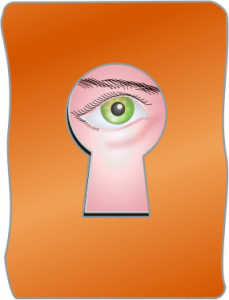 Silly me.
Silly me.
I thought a silver lining in the Covid Crisis would be that managers would learn most workers do not need constant oversight to do good work, and will be productive from home even with its distractions. Because they couldn’t monitor worker activity closely, some managers would be forced to empower their teams to meet customers’ needs and manage their own workloads together virtually. They would finally invest in tools that let teams manage their own work transparently. All would learn “control” is no longer a valid part of the management vocabulary, because it was impossible from a distance.
I’m an idiot.
Instead, the Washington Post reports, many are turning to police-state surveillance technology that amoral companies are happily pushing. It describes technology allowing managers to monitor computer use minute-by-minute. A supervisor asks where someone went when they step away from the keyboard. A CEO of a company providing one such tool claims it would be irresponsible for managers not to use these tactics, sounding very much like a comic-book supervillain who claims they are taking over the world to make it better for everyone.
My answer to him is that you, sir, are being irresponsible, indeed unethical, by facilitating an approach to management long proven harmful in so many ways. My first question would be, “Are you allowing your board of directors to watch your every working moment?” If not, the practice fails one of the simplest and best-known ethics tests (among others), the Golden Rule that pops up in most cultures going back at least to the Chinese philosopher Mencius.
American CEOs who presumably lionize “American values” like capitalism would chafe at the idea of North Korea-style surveillance of the general populace. Yet they have no problem imposing the same degree of surveillance on their general populace of workers.
Moving from universalism to pragmatism, I’ll add that surveillance is literally counterproductive to the reasons provided for it in the article. Let’s call this practice by its traditional business term: This is micromanagement in a robot’s exoskeleton. I could roll out studies going back a century showing that micromanagement consistently reduces worker productivity. Besides interfering in work flow, it harms worker morale, job satisfaction, internal motivation, and trust, all of which link to productivity and customer satisfaction—which in turn link to profits and shareholder value. Go to your bookshelf and look through every leadership book on it. I defy you to find a single management guru who tells you micromanagement is the right way to lead, unless the author is Niccoló Machiavelli.[1]
The data-driven recommendations for managing your team in this instance are little different from what they were before. At a high level:
- Learn an Agile method appropriate to the type of work the team does, or better yet, let members create their own.
- Set up a method of channeling work from the team’s “customers,” whether internal and/or external to the company, directly to the team.
- Choose a digital tool by which the team can review, prioritize, discuss, self-assign, and report daily progress on tasks.
- Give everyone on the team, and all stakeholders, access to the tool’s dashboards.
- Set performance standards based on customer satisfaction, and systems for rewarding/compensating the team as a whole based on them.
This moment in history is a once-in-a-lifetime opportunity for managers who constantly say to themselves, “There has to be a better way to do things.” Now, with business down and workers short on tasks, this is the moment to experiment with “radical” changes and see how they work. There are much better ways of managing people than the ones your supervisors modeled for you, and this is the golden moment to learn and apply them. The steps above will provide ample evidence that people are working hard without your having to track every minute of their lives within their own homes, like some science-fiction dystopia.
There are plenty of Agile coaches out there who can help, probably for less than you will pay for evil and expensive surveillance technology. If you have zero money, this is the perfect time to implement the free and comprehensive guidance on my Full Scale agile™ site. These actions will save you money compared to the costs of lost productivity and mis-spent supervisor time resulting from micromanagement.
Please share this post at the bottom of the page.
Source: Harwell, Drew, ‘Managers Turn to Surveillance Software, Always-on Webcams to Ensure Employees Are (Really) Working from Home’, Washington Post, 2020 <https://www.washingtonpost.com/technology/2020/04/30/work-from-home-surveillance/> [accessed 6 May 2020]
[1] Sixteenth-century Italian author of The Prince, which describes how rulers successfully maintain their own power without addressing questions of right-and-wrong or benefits to their people.
